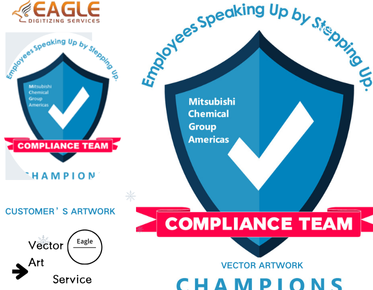How to Find a Raster to Vector Tracing
In the ever-evolving world of digital graphics, converting raster images into vector format has become an essential skill for businesses and graphic designers. This transformation, known as raster to vector tracing, is crucial for ensuring design scalability and maintaining image quality across various applications. But how does one navigate the realm of raster to vector tracing services effectively?
Understanding Raster and Vector Graphics
Before diving into the conversion processes, it's important to understand the fundamental differences between raster and vector graphics. Raster graphics, such as JPEGs, GIFs, and BMPs, are composed of pixels, the grid of tiny dots that form an image. When enlarged, raster images often become pixelated and lose clarity.
On the other hand, vector graphics are composed of paths defined by mathematical equations, using points, lines, and polygons to create shapes. This makes vector graphics infinitely scalable without losing quality, which is crucial for various applications such as logos, banners, and promotional materials.
Why Choose Raster to Vector Conversion?
The decision to convert raster to vector images is fueled by the need for flexibility in design and production. Factors that make vectorization appealing include ease of editing, scalability, and the ability to produce cleaner lines and shapes as opposed to pixel-based graphics. This conversion is especially beneficial for businesses in the printing, advertising, and fashion industries.
Identifying the Right Raster to Vector Services
When searching for a raster to vector company, it's vital to consider certain criteria to ensure that your needs are met effectively. Key considerations include:
- Turnaround Time: Look for services that offer rapid processing times. For instance, companies that promise a 2–24 hour turnaround without rush charges are highly favorable.
- Pricing Transparency: Opt for services with clear and flexible pricing models based on design complexity, without hidden fees.
- Quality Assurance: A robust service provider will have a proven track record of high customer satisfaction. For example, Eagle Digitizing boasts over 8,000 testimonials and a 99.9% satisfaction rate.
How to Benefit from Professional Vector Services
Opting for professional vectorization services brings a host of advantages, particularly for businesses aiming to enhance their marketing materials through high-quality graphics. Companies like Eagle Digitizing provide an array of services including background removal, color correction, and image retouching, among others, to ensure that your design requirements are met comprehensively【4:0†Vector Services.json】.
Diving into Vector Conversion Tools
For those inclined to explore conversion in-house, a myriad of vector conversion tools are available online. Software like Adobe Illustrator and CorelDRAW are widely used for their comprehensive vectorization capabilities. Online converters are convenient for users who seek quick conversions without installing any software.
Exploring Innovative Techniques in Vectorization
The process of vector tracing involves several intricate techniques aimed at transforming every line and curve of a raster image into a vector counterpart. With expert digitizers exploiting advanced software tools, it’s possible to reproduce even the most complex designs in precise vector format.
At Eagle Digitizing, cutting-edge techniques ensure that every project receives meticulous attention to detail, from handling complex images to managing color separations【4:6†Vector Services.json】.
Future Pathways and Technological Advancements
The demand for vectorization is expected to grow as businesses increasingly require adaptable and high-quality digital assets. Advancements in artificial intelligence and machine learning are set to revolutionize how conversions are handled, enabling faster and more precise vectorization processes.
As these technologies evolve, we will likely see more intuitive and accessible vector conversion solutions, transforming how designers and businesses approach artwork digitization. The continual enhancement of vectorization technology ensures a thriving future for both creators and service providers in the graphic arts industry.
Whether you are a business seeking to upgrade your digital assets or a designer aiming to maintain cutting-edge proficiency, understanding how to leverage raster to vector tracing will remain a valuable skill. Have you considered the potential impact of these upcoming technologies on your design practices?



